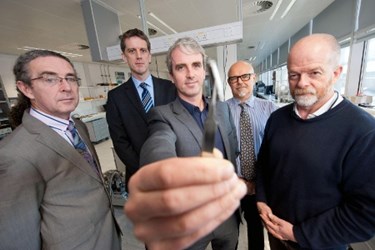Powering Pacemakers With Heartbeats
By Sara Jerome,
@sarmje

Is the human heart strong enough to power a medical device?
That’s the concept behind research at Tyndall National Institute at University College Cork in Ireland. Researchers were awarded €6.1 million in funding from the European Union to explore whether energy extracted from a beating heart can be used to power a pacemaker.
The project, known as “MANpower”, will “target the development of perpetually self-powered, electronic systems that can be implanted into the human body, thus removing the requirement for a battery replacement,” according to an announcement from the institute.
The human heart produces a considerable amount of energy, according to Alan Mathewson, one of the researchers on the project.
“Every time a human heart beats, it creates vibrations at a low frequency – about 1 to 30 Hz,” he said. “The devices we are developing convert the vibrations from the heart into usable electrical energy, which can be used to power devices such as a pacemaker.”
The stiffness of silicon and other key materials has made it difficult to create an energy harvesting technology that will not pose a danger to patients. A device that solves this problem would have ”large commercial potential,” the institute announcement said.
The project could have an expansive impact on the medical device field, according to Cian O’Murchu, the project coordinator.
“The research results developed over the course of the project will have the potential to expand into new applications areas in the field of medical and diagnostic devices,” O’Murchu said.
Research to improve pacemaker technology is a rich field.
Last month, University of Waterloo researchers announced a new technology for making pacemakers stay energized longer.
The groups “developed wideband hybrid energy harvesters that use different types of smart material solutions to convert ambient vibrations into electricity,” the university said in a release.
Armaghan Salehian, the leader of the research group, said she hopes the technology will “dramatically reduce” the number of patients that need to get their pacemakers replaced.
Also in December, medical device giant Medtronic announced the first human implant of the world’s smallest, minimally invasive pacemaker, a pill-sized device that is implanted directly inside the heart.
“We now have a technology that has the potential to improve outcomes and reduce the cost of the therapy,” said Pat Mackin, a senior VP at Medtronic, told the Minneapolis Star Tribune.
Image credit: Tyndall National Institute
